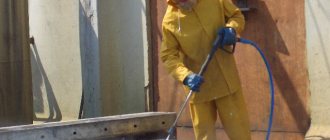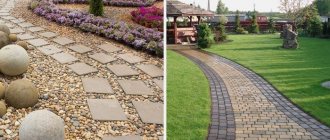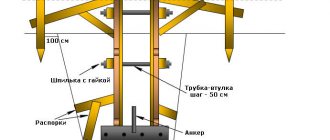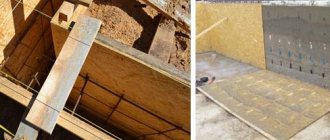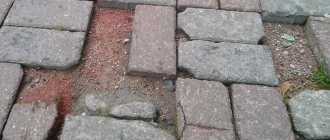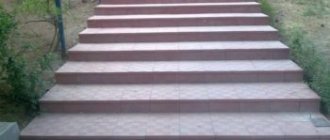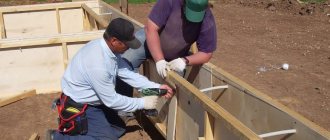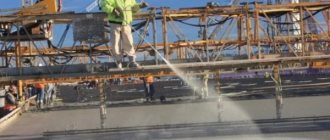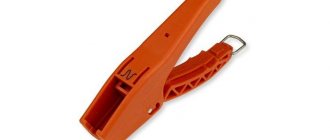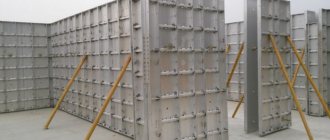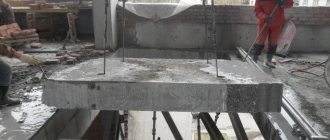12.06.2019
Any garden or vegetable garden needs beauty and care. The best choice, in this case, would be to lay tiles on the paths. It will help improve the appearance of the dacha, creating an atmosphere of prosperity and neatness. You can purchase tiles in a store or create your own. All that is needed to accomplish the last point is a little skill, the availability of the necessary materials and the right lubricant. Lubrication is necessary to create the shape of paving slabs. It can be self-made or specialized. The choice of what to lubricate with often depends on the level of production, as well as the structure of the formwork.
Varieties of paving slab shapes
Tiles are small pieces of concrete that have different shapes and are laid on the path.
There are several types of structure:
- In the shape of a rectangle.
- Free
- Universal.
- In the form of a model.
- Castle.
- Ecological.
Among other things, tiles can be cast or pressed. The second option requires the presence of special devices, as well as skills and abilities. Doing it yourself is a rather difficult and time-consuming process. It is much easier to make cast tiles. To do this, you just need a little patience, strength and skill.
Materials for pouring: plastic, concrete
There are types of tiles based on the content of materials:
- Made of cement and sand.
- Made from baked clay.
- Made of rubber.
- Made of plastic.
- Made from granite.
Cement tiles have a number of positive properties: they are durable, do not fade even after a long period of use, and do not allow moisture to pass through.
Clay paving stones come in a variety of colors and have anti-slip properties.
The rubber pieces are made from polyurethane, a material widely used in the soles of shoes. This tile is characterized by softness and slight surface roughness.
To lubricate or not - that is the question.
For many manufacturers of small-piece concrete, including paving slabs, the issue of lubricating molds for better separation of finished products and reducing the amount of waste during formwork is urgent. As you know, release agents are always used in the production of large reinforced concrete products. But often, in the production of such products, decorative properties are not as important as in the production of paving and, especially, facing tiles. In turn, it should be noted that careless attitude to the release agent and the process of its application can lead to loss of presentation and damage to decorative products. What to do - you ask. Let's try to understand the process of lubricating molds.
So, the lubricant is used to prevent the concrete from sticking and contaminating the forms - this is understandable. The lubrication process can be done manually - with a brush. Or you can spray a release agent, for example, with a spray gun or spray gun. The molds are lubricated immediately before the concrete is formed, each mold is lubricated separately.
Experience shows that it is possible to establish a production process without lubrication, but this entails an increased load on the mold and more frequent cleaning. For example, it has been producing paving stones using the injection molding method since 2001. During its entire existence, the mold lubrication process was introduced for only one season. Various lubricants of domestic and imported production were used. The lubricant was applied manually and later with a spray gun. But the result did not suit the production manager - with an increase in the production volume of paving stones (Antik No. 2, 52 pcs./m2), the lubrication operators could not cope with the process. Imagine, production reaches 130 - 150 m2 per shift, and if there are 52 pieces in 1 m2, then the lubrication section must process more than 6000 pieces. forms per shift. Errors by the lubrication operator lead to an increase in scrap, plus the cost of labor and materials increases the cost. As a result, this enterprise has improved the mold washing area and the concrete composition (now the composition is strictly controlled by the w/c ratio - the “harder” the solution, the less it sticks to the formwork). And it has successfully existed without lubrication for more than 10 years.
Today there are many domestic and imported lubricants on the market. Let's consider several options:
Emulsol.
Emulsol
is a modern water-based lubricant, easy to use and inexpensive. It consists of biodegradable substances, which eliminates the adhesion of concrete to the surface of the form. Lubricants of this type are made from environmentally friendly substances; they do not require special safety measures when working with them. When applied evenly in a thin layer, the lubricant significantly reduces the adhesion between the concrete and the mold, the porosity of the surface of the products, and does not leave stains, which allows you to obtain products with a smooth and clean surface without subsequent finishing or grouting.
Emulsol
prepared in a ratio of 1/3 to 1/5 with water. It is applied to each form with a brush or by spraying, carefully coating the corners and edges of the front surface of the form. In conditions of high pH levels in the water, you can add soda ash to the solution (2% of the emulsol mass fraction).
It is worth stirring the solution thoroughly, although the lubricant dissolves well in water. Emulsol can be used not only for plastic molds, but also for metal ones. It perfectly protects metal from corrosion. It is not recommended to prepare the emulsion for more than one shift.
FREM SLAE – III
New generation anti-adhesive lubricant for molds and formworks, based on animal fats and surfactants.
When applied to cold and hot forms and during heat treatment, it does not decompose and does not release into the air of production premises products with a pungent odor or that have a harmful effect on humans and the environment.
Application area:
- used in the production of prefabricated and monolithic concrete and reinforced concrete products and structures
- effective both for molding products without heating and using heat and humidity treatment (HMT).
The main purpose of lubricants for metal molds is:
- facilitating the separation of concrete from the mold or formwork material
- ensuring good quality of the outer surface of products by reducing the number of defects - tears, peeling, etc.
- protection of metal forms from corrosion
Advantages:
- absence of oil stains on the surface of products
- reduction of costs for final finishing of concrete structures
- does not leave marks, does not change the color and texture of the surface
The lubricant is a concentrate that should be diluted with water in a ratio of 1 part lubricant to 3-6 parts water. In this case, no water preparation is required.
Apply the lubricant to a dry surface free of concrete residues. Applying excess lubricant leads to a decrease in the quality of the concrete surface, waste of material and unnecessary increase in cost.
Lubricant consumption when applied to molds with a brush or brush is from 30 to 50 g/m2.
Paving slabs are used to lay paths in summer cottages and cottages, and paths in the garden. Neatly tiled paths give a well-groomed look to any country house. It is better to purchase the product in construction markets or make it yourself. To make it yourself, you will need a lubricant for paving slab molds. You can also prepare it yourself or purchase it at hardware stores.
Various options
The tile covering is made of concrete and can have different structures:
- universal;
- rectangular;
- arbitrary;
- castle;
- model.
There are two options for making the product - under pressure and casting. The first method is quite heavy, and the second can be used for self-production. The composition of the product is also varied:
- cement with sand;
- fired clay;
- rubber;
- plastic;
- granite.
Most often, cement is used as the basis for the product. This is a durable material that is practically indeformable during prolonged use. All that remains is to find out how to lubricate the molds for paving slabs.
Features: manufacturing and application
Paving stones are made from concrete, which in turn consists of cement, sand and water mixed in the required proportions. Everything is taken into account here, from the brand of cement to the purpose and area of application of the paving slabs.
What kind of pressure should it withstand and the like. Most often, cement is used either 1:3 or 1:4, for example, if cement is grade M 500 (which is considered one of the best), then the proportion will be 1:4.
Paving stones are made from concrete, which in turn consists of cement, sand and water mixed in the required proportions.
Choosing the shape of the tiles is also an important matter; they are divided into several main types:
- rectangular;
- arbitrary;
- universal;
- model;
- castle;
- and ecological form.
Tiles are also divided according to the production method, among them there are two main ones - cast and pressed.
To produce pressed tiles, special equipment and large investments are required, which means it is very difficult to do this at home.
Such tiles are used for paving large areas and roads; they are able to withstand very high pressure, due to the fact that during production the concrete is constantly exposed to blows from a special hammer.
Return to contents
DIY recipe
Regardless of the type of tile product chosen, the process will require a lubricant. The recipe for lubricant for paving slab molds is as follows:
- motor oil (50 g);
- water (1.5 l.);
- dilute the oil with water;
- the mixture must be stirred very thoroughly;
- Make sure that the composition is not too greasy, otherwise you will end up with a low-quality product;
- a non-concentrated composition is also not suitable.
When the lubricant is ready, you can begin preparing the concrete mixture. You will need a concrete mixer. If you need a multi-colored option, then acrylic paints are added to the concrete mixture. You can also make the molds yourself, especially if you want something unusual. They are made from wooden blocks. Special stencils are sold for applying the design.
Available application options
This method is available to everyone and makes it possible to create a slab of exactly the shape and size that we need. In order to create it, you will need concrete.
When making it, you can use the “clumsy” method, mixing with a shovel in a trough. But this is a very labor-intensive process that takes a lot of time. It is better to use a concrete mixer that you can buy, rent or borrow. Do not forget to add a plasticizer to the mixture; if it is dry, then it must be dissolved in water.
And to obtain tiles of various colors, acrylic paints are added to concrete, so you can create tiles not only of any shape, but also of any color. The paint must be mixed with sand before adding it to the mixture.
To obtain tiles of various colors, acrylic paints are added to concrete, so you can create tiles not only of any shape, but also of any color.
- In addition to concrete, you will also need forms, which can be purchased in specialized stores; the most convenient are forms made of rubber and polymer. But you can also make them yourself.
For example, make frames from hewn wooden blocks. In this case, the shape will depend solely on your imagination and skillful hands. However, to create a drawing, you still have to go to the store to purchase a stencil to your liking. The stencil is applied to the concrete as soon as it is poured into the mold and removed after a few minutes.
Return to contents
Lubricant properties
Lubricate the molds for production before pouring. Do-it-yourself lubricant for paving slab molds has the following properties:
- high-quality composition does not spoil the color and shape;
- there are no pores allowing air to pass through;
- the composition can be diluted with water;
- the finished tile can be removed from the mold without any problems;
- a thin layer of composition is required;
- no need to purchase special clothing.
The lubricant is applied with an ordinary sponge. The forms in which the products are prepared are usually not heavily soiled. The lubricating solution does not require special skills or costs to prepare.
Manufacturing methods
In practice, two main methods are used. First, let's get acquainted with the nuances of obtaining the material in question using the vibration casting method. This method is characterized by its comparative cheapness and the ability to obtain high-quality building materials even by inexperienced workers.
The technology for producing the material is as follows. The prepared working solution is poured into greased molds. Next, they are installed on a vibropress and compacted until air bubbles are released. Next, the raw material is placed on special racks for drying. After about two days, the tiles are knocked out of the molds and reused.
Paving stones made by vibrocompression differ from their analogues in improved resistance to mechanical stress and high strength. Such materials are intended for laying coatings in critical places, for example, car parks.
Note:
You can only make vibro-cast paving stones with your own hands, which can be used for constructing garden paths. Homemade materials cannot be used for a long time as a covering in places where vehicles are moving or parked.
The technology for producing vibropressed tiles is somewhat reminiscent of the work on producing tiles using the vibration casting method. The finished solution passes through a special press, so the products have improved strength indicators. At the final stage of work, the material is dried in special steaming chambers.
How to lubricate?
To get a quality product, you need to know how to coat molds for paving slabs. Be sure to clean the molds before starting work. There should be no debris or any contamination left in them.
Important: lubricant for paving slabs is applied only before pouring the concrete mixture. Apply the mixture to the walls in a thin layer. You can use a brush, sponge, spray. The tool depends on the composition of the lubricant. You will only need gloves to protect your hands.
Observe the following rules:
- tile molds should be lubricated so that there are no gaps;
- make sure that no brush bristles get into the molds;
- You can clean the molds with a solution based on hydrochloric acid (diluted with water).
It’s easier to clean with soap and water. You need to mix the soap with any dishwashing detergent.
Thanks to the preliminary application of lubricant to the molds, we get the following result:
- the product can be removed perfectly;
- formwork and forms are easy to clean;
- The original shape is preserved because it can be easily removed.
Special tools
To obtain the materials in question, you need the following tool:
- Concrete mixer of a certain volume.
- Factory or homemade vibration table.
- Rack for laying forms of paving slabs (used as a dryer). Drying of raw materials will take place in this place. The initial process takes two or three days, then the paving stones are knocked out of the mold and laid to dry for another month.
Good to know:
A similar unit is used to remove air bubbles from the concrete mixture during compaction.
- Containers for warm water. In them, products are removed from the formwork;
- Matrices or forms. They can be made from scrap materials or ordered from online stores.
Lubricate the plastic
Grease for plastic molds of paving slabs is also applied before pouring. Each mold needs to be processed separately. The compositions do not require work in special clothing, thanks to environmentally friendly components.
Advantages of a lubricant composition based on biodegradable components:
- safety at work;
- economical;
- mixes with water;
- does not affect the rate of hardening of the concrete mixture.
Another advantage to using emulsol as a lubricant is frost resistance.
When diluting concentrates with water, make sure that the mixture is homogeneous. Silicone lubricant for paving slab molds has good water-repellent properties. Most often it is used in the manufacture of large tiles. Can process plastic and metal molds.
Fill
The forms are greased, all that remains is to fill them with concrete. The work requires compliance with certain rules:
- It is better to use a vibrating table. Do not weaken, try not to overload the springs;
- Large tiles are made in two steps. First, they fill it to the middle, then the reinforcement is placed. The final stage is complete filling.
When making products with your own hands, lubricant for paving slabs plays an important role. After finishing the work, the product literally jumps out of the mold without additional effort.
The secret of beautiful tiles
To make paths and sidewalks at your dacha look beautiful, you need to know how best to lubricate molds for paving slabs. Lubricating compounds make the entire tile production process much easier.
Thanks to the proper use of lubricants, the molds remain in working condition for a long time. Depending on the structure of the composition, it may be enough for a large number of molds. Preparing the mixture will take time, but will pay off in the process of making the tiles and subsequent cleaning of the molds. A properly prepared lubricant allows you to remove finished products from molds without deformation. Lubrication also affects the color of the product.
Follow the main rule: the molds are not filled with grease, but rather lubricated.
Lubricating the mold during the production of paving slabs: purchased
If desired, you can purchase lubricant for paving molds in the store. Such specialized substances will make it possible to produce large batches of tiles without additional stops for constant mold washing, as happens with homemade types of lubricant.
The most common variations of the lubricant composition are the following:
- KSF-1 is distinguished by its affordable price and absolute environmental safety;
- Krystal is an oil from which an emulsion will later be created for application to the mold. It is recommended to spray this substance rather than apply it with a sponge;
- Nometal is recommended for use if the paving stone material contains a metal component. An additional advantage of such a lubricant is the prevention of corrosion;
- Agate is suitable for any type of paving stones. Its main advantage is considered to be savings in the application process;
- Separen is specifically transformed on the mold, forming a film. This allows the product to be easily removed;
- Emulsol is diluted with water in a certain ratio. Everything is indicated in the instructions. Thanks to this, the substance will last for a long period of time.
Let's compare the efficiency
Cheap, readily available components can also be used as lubricating solutions. Let's look at how they behave during operation:
Which composition will be better depends on the quantity of the product produced. Therefore, if the sidewalk paths are not several kilometers long, then there is no need to spend extra money. Try homemade options for making lubricating solutions.
Regardless of what lubricant you use during the process, you should not leave finished products in the molds for a long time. The deadline when the product can be removed without problems is three days. If you leave it longer, it will be difficult to wash the molds.
How to avoid bubbles?
Lubricating mixtures help not only to safely remove the finished product. This way you can avoid the formation of bubbles on the surface of the tiles.
Bubbles usually form on the face of the tile. It looks very ugly. This is why it is so important to pre-apply a lubricant before pouring concrete.
To improve the quality and effect of the lubricant composition, add a plasticizer to it. This action will prevent the appearance of bubbles.
Cement affects the quality of tiles. The material must be fresh, not stale. Pay attention to the cost of cement, and it’s better not to save money. It is advisable to purchase cement in large construction stores, where you can check the contents of the material.
To give the tiles the required color, try to dilute the dyes in advance. It’s good if the diluted solution remains for half a day. Don’t be afraid to leave the dyes for so long, they won’t deteriorate and the structure won’t be deformed.
Lubricant for paving slab molds ArmMix Gruntform
Concentrated mold lubricant
Product description
ArmMix Gruntform is a lubricant concentrate (1 to 9 - 1 to 19) for polyurethane, rubber and polypropylene forms, anti-adhesive, water-based, used in the production of paving and facing slabs, curb stones and other vibration-cast and vibration-pressed products.
Product packaging
Canisters 1, 10 liters Barrels 200 liters
Payment Methods
Prepayment Cashless payment
Delivery methods
Pickup Moscow and region All over Russia
*retail price includes VAT and packaging. Discounts apply to purchases of 100 liters or more of products and to regular customers.
Concentrated lubricant composition for polyurethane and rubber molds, used in the production of paving and facing slabs, curb stones and other vibration-cast and vibration-pressed products. One-component composition, diluted with water in a ratio of 1:9 - 1:19. Does not contain solvent and has no irritating odor. Has no harmful effects on the human body and the environment.
Application and properties
As an anti-adhesive coating for polyurethane and polypropylene molds for vibration casting and vibration pressing of paving slabs and other decorative products. Effective both for molding products without heating and using heat and humidity treatment (HMT), electric heating, convective (hot air) and other types of heat treatment of concrete up to +90°C
Advantages and qualities
- It is supplied in concentrated form - from 1 liter of concentrate you get from 10 to 20 liters of finished lubricant.
- Does not leave marks, does not change the color and texture of the surface.
- Eliminates mechanical and chemical cleaning of molds, increases their durability and product quality.
- The operation of washing molds with hydrochloric acid is completely eliminated.
- Convenient to use - the anti-adhesive properties of the mold surface are ensured when the lubricant layer is wet or already dried.
- Does not cause corrosion.
Before applying the composition for the first time, clean the surface with White Spirit. Before use, mix (shake) ArmMix Gruntform lubricant concentrate in its original packaging. Dilute with water in a ratio of 1 to 10 to 1 to 19. Using a brush, roller, spray or watering, apply a thin layer of lubricant to the surface of a cold (from +5C) or hot mold (up to +90C) in one pass without skipping.
Safety requirements:
The lubricant is fireproof. The composition has a slightly alkaline reaction - pH = 8-9. Work in overalls, safety glasses and rubber gloves. If the lubricant gets on the skin, eyes or mucous membranes, rinse them with plenty of warm water.
Approximate consumption of finished lubricant
Additional product information
Package
plastic canisters 1 l, 10 l, barrels 200 l.
Transportation and storage
The packaged lubricant concentrate is transported by road, rail and other modes of transport in accordance with the rules of transportation and cargo securing in force for this type of transport. Packaged lubricant is stored indoors at a temperature not lower than +5°C under conditions that ensure the safety of the packaging. Manufacturer's guarantee: The guaranteed shelf life of the lubricant is 12 months from the date of manufacture. Do not freeze. Contains suspension, sediment is allowed.
Lubrication cost
Allows you to minimize costs for landscaping. Technically, this is not difficult to accomplish - it is enough to have building materials, forms for pouring concrete mixture and lubricant for them.
Forms for FEM.
The materials used include cement, sand, fine gravel, dye and plasticizer, and a variety of beautiful and convenient tile shapes are sold in stores at very affordable prices.
The application of lubricant is necessary to ensure that finished products are removed from the molding cells without applying great force that could damage the surface or edges. Therefore, the question of how to lubricate the mold for paving slabs is very relevant.
Lubrication Specifications
Tile molds sold come in a variety of configurations and can be made of rubber or plastic. At home, wood, metal, gypsum, silicone and polyurethane are used. The type of material must be taken into account when choosing a lubricant.
In addition, it is necessary to take into account that the correctly selected type of lubricant must meet the following requirements:
- tiles are removed from a pre-greased mold easily and without damage;
- the presence of lubricant should not affect the formation of products and change color;
- there should be no shells or multiple pores on the surface of the finished slabs;
- the lubricant must be diluted with water or an inexpensive solvent;
- Possibility of applying a thin layer to the surface.
Lubricant for molds should be safe for humans and not require the use of special protective equipment.
Types of materials used
As a lubricant for tile molds, you can use improvised or specialized materials. The first group includes:
- machine oils;
- soap compositions;
- table salt solution.
Liquid oil is applied in a thin layer to the surface using a simple foam sponge. Its presence facilitates easy removal of finished products from molds with minimal residual contamination. However, it must be taken into account that waste and dark grades of oils can change the color of paving slabs, and light grades are much more expensive.
To prepare a soap solution, take a liquid detergent and dilute it with water until the required consistency is obtained. This soap-based mold release agent has good sliding properties, but the adhesive properties of the composition lead to rapid contamination of the molds and the need for constant cleaning.
A solution of table salt is the cheapest solution to the problem. To apply it to the surface, you just need to dip all the forms into the liquid. But if salt gets into the concrete solution, white stains that are difficult to wash off may form on the tiles.
Factory-made lubricants
Specialized lubricants are sold in building materials stores. Their composition eliminates contamination of forms, discoloration, and the formation of streaks and stains. The most common brands of lubricants include:
- White paste-like lubricant concentrate KSF-1. Diluted with water and applied with a paint brush or spray. After application to the surface, a period of time is required until the concrete mixture is poured. The material is non-toxic and environmentally friendly. The average cost is 150 rubles/kg.
- Ready-to-use emulsion composition “AGAT-BIO” and special lubricant for plastic forms of paving slabs “AGAT-B9”. Both are made from biodegradable oils and do not pollute the environment. Apply by any known method. Concrete can be poured into molds immediately after application to the surface. Cost 120-130 rubles/kg.
- Colloidal solution "Emulsol" based on mineral oil and surfactant soap compositions. After the concrete hardens, there may be a residue in the form of greasy stains. The thick solution can be diluted with water. Cost 180-200 rub./kg.
- Paraffin-containing lubricant for concrete molds “Krystal”. Supplied ready for use. Ideal for wood and plaster molds. When using a sprayer, the consumption is reduced to 25 g/m2. The average cost of lubricant is 200-220 rubles/liter.
- Emulsion composition "Nometal" based on vegetable oils. Able to provide good protection of metal forms from corrosion. Provides continuous surface coverage. Apply with a brush or foam sponge. Price 230 rub./liter.
- An aqueous solution of Separen paraffins, which forms a fixing film layer on the surface of the tile. Supplied as a ready-to-use white liquid. Can be applied with any tool. The average cost is 160-170 rubles/liter.
The use of these materials will be very relevant if it is necessary to produce large quantities of FEMs. They are more reliable than salt brine or soap release for paver molds. Using them will simplify your work and guarantee high quality of finished products.
Effective cleaning methods
Getting rid of large residues
As a rule, especially large remnants of tiles remain in the corners and on the edges. There is no way to get rid of such elements except with the help of solid objects. Here you can use a scraper, spatula and similar tools. The main thing is that they are not sharp, and perform all work as carefully as possible to reduce the likelihood of damage to a minimum.
We remove minor dirt
Minor stains are removed using chemicals, namely a solution of hydrochloric acid. It is prepared at the rate of 1:10. To clean, simply pour a small amount of solution into the mold and remove dirt using a small brush with long bristles (allows you to easily reach dirty places in the corners). After cleaning, lower the mold into a pre-prepared container with clean water. The brine solution can be used for subsequent cleaning by pouring from one mold to another.
Note! Working with saline solution requires compliance with safety measures: protect the respiratory tract with a respirator or gauze bandage, wear thick clothing and rubberized gloves.
DIY lubricant for paving slab molds
Using homemade compounds for tile molds allows you to save on purchasing consumables and not have to think about how to lubricate the concrete mold.
To prepare the product, take liquid detergent or machine oil and dilute it with plain water in a ratio of 1:3 to 1:5. The exact proportion of the composition depends on the desired density of the resulting material. To prepare an oil-based emulsion, you must use a construction mixer inserted into a high-speed drill.
To obtain a saline solution, use a pack of table salt in a bucket of water. For better dissolution, the liquid can be heated, but only use chilled brine in the work.
Preparation of the solution
The basic composition of the paving mortar must contain the following components:
- 21% binder (cementm500);
- 55% sand purified from large impurities;
- 24% of granotsev;
- 0.7% plasticizer (you can take grade C-3);
- 7% pigment dye
- reinforcing fiber 0.05%;
- 5.5% water.
To obtain a high-quality mixture, it is necessary to mix all of the specified raw materials in a concrete mixer. First you need to dissolve the plasticizer with a small amount of warm water and pour it into the mixer. The drum of the unit rotates until the plasticizer is completely dissolved in the liquid.
The pigment dye is also mixed with water heated to 80 degrees until completely dissolved; these components of the mixture are taken in a ratio of 1 to 3. After pouring the required amount of water into the concrete mixer, sand and crushed stone are added alternately, then a binder (cement). For effective mixing, water is periodically added to the raw materials. The last time this is done is at the end of the batch.
How to properly apply lubricants
The choice of method for applying lubricant to the inner surface of the molds depends on the degree of thickness of the material. For liquid compositions that resemble water, it is convenient to use a spray bottle or pour them into an open container and simply dip the molds. Thicker substances based on oils and paraffins are applied with a brush or foam sponge.
The inner surface of the molds should be covered with a thin continuous layer. For this purpose, lubrication is recommended to be carried out 2 times with a time interval of 15-20 minutes. This allows for a more uniform distribution of the material and guarantees a continuous coating. Before applying mold release agent, it is recommended to dry and apply the used composition to a clean, dry surface with higher adhesion.
If you use homemade compositions, test 1-2 tiles and see the result. If the quality suits you, then you can safely use this technology. If stains, discoloration or other defects are found, then it is better to invest in factory-made material.
